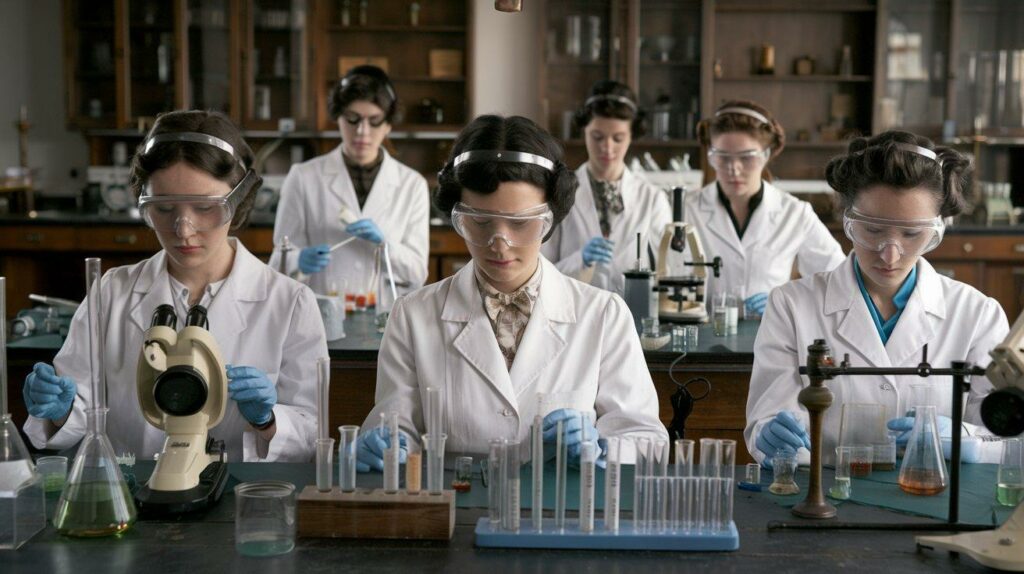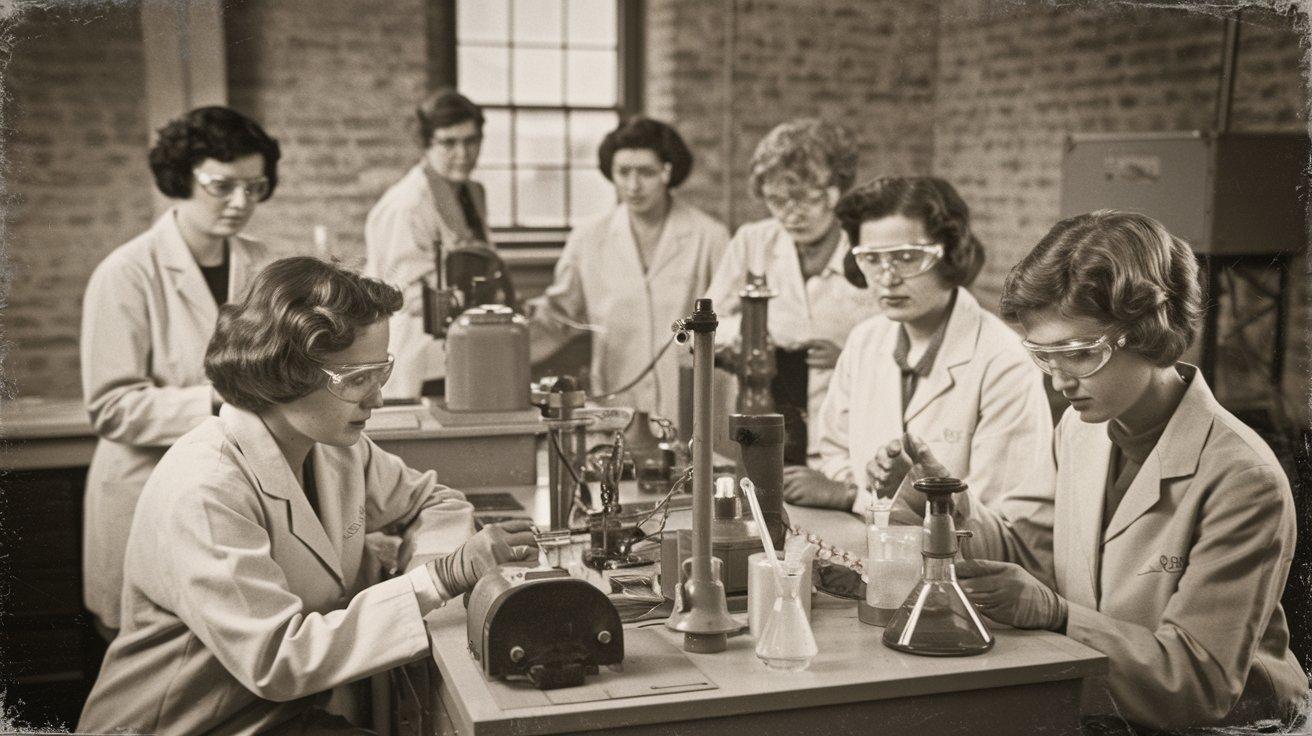Gender disparities in representation, access to research opportunities, and academic recognition represent significant obstacles for women in scientific careers. However, in the history of technology, several women have made significant and groundbreaking contributions that have been instrumental in advancing science. A notable example is Ada Lovelace, the daughter of Anne Isabella Byron, a noble mathematician, and the Romantic poet Lord Byron. Her mother encouraged her to study music and delve deeper into mathematical logic.
In addition to her mother’s encouragement, Ada also had the friendship and guidance of English mathematician Mary Somerville. It was Mary who introduced Ada to Charles Babbage, the developer of the differential engine. Designed to perform calculations of polynomials mechanically. In 1842, Ada wrote the first algorithm to be processed by Charles Babbage’s analytical engine. This algorithm was capable of calculating the Bernoulli sequence, and for this feat, Ada is considered the first programmer in history. Ada’s research laid the foundations for computing and programming, which shaped the world of technology decades later. Ada Lovelace was a true visionary, and her pioneering contributions were essential to the development of the programming logic we use today.
Common Business-Oriented Language
Grace Hopper is another notable name in the history of technology. Between the 1940s and 1950s, she was responsible for developing the Flow-Matic programming language. This language served as the basis for the creation of the Common Business-Oriented Language (COBOL). Which is still used today for processing commercial databases. In 1959, Grace Hopper developed her compiler, recognized as the first in history. A compiler is capable of translating a program written in textual language, which resembles the programmer’s language, into machine language, which the computer can understand. It was also Hopper who popularized the term bug, which is now widely used in technology and everyday life. According to the story, while trying to solve a problem with her computer, she discovered a dead insect inside the machine. Since that episode, the term bug has been associated with errors or code flaws.
The origin of disparity
Despite this historical representation, if we maintain the current pace, it would take about 100 years to achieve gender parity in scientific publications in the areas of Science, Technology, Engineering, and Mathematics (STEM). This is what a study published in 2019, by a research carried out by the Allen Institute for Artificial Intelligence, reveals.
Historically, patriarchal society has assigned women tasks that were considered simpler and less important, such as taking care of the home and raising children, while men have been assigned tasks that are considered more prestigious, such as providing for the family through work, whether manual or intellectual. Society, however, is constantly changing, driven by scientific advances. In this context, an activity that was previously considered easy, requiring little knowledge and specialization, is seen as a feminine activity and can be completely redefined by technological advances. Thus, it can gain notoriety and importance, and society begins to consider it a challenging and masculine activity.
Electronic Numerical Integrator and Computer
The act of programming has undergone a redefinition over time. There was a period when programming was considered a secondary and unimportant activity and was thus often relegated to women. During World War II, the ENIAC (Electronic Numerical Integrator and Computer). The world’s first programmable digital and electronic computer. Was developed to assist in ballistic calculations. Programming the ENIAC involved the use of wires and switches to define operations. In addition, punched cards were used to store information. Programming the ENIAC was manual, arduous, and error-prone work. As a result, six women played key roles as its main programmers: Frances Bilas, Jean Jennings, Ruth Lichterman, Kathleen McNulty, Betty Snyder, and Marlyn Wescoff.
Female Computers
We can also mention the case of the “female computers” who contributed to the development of NASA’s space program in the 1950s. These “computers” were responsible for manually calculating the trajectory equations needed for space travel. The story of these female mathematicians, particularly the black scientists Katherine Johnson, Dorothy Vaughan, and Mary Jackson, was recently portrayed in the 2016 film “Hidden Figures”. The roles they performed were extremely poorly paid since they were secondary activities.
Institute of Mathematics and Statistics
Computing began to play a prominent role in the post-war world, due to its decisive role as a tool in the war machine. Consequently, it began to be perceived as a predominantly male activity. Thus, from the 1970s onwards, there was a major gender shift in the technology field worldwide. For example, the first class of the Bachelor’s Degree in Computer Science at the Institute of Mathematics and Statistics (IME) in São Paulo, in 1974, was made up of 70% women. This percentage has fallen drastically not only at IME, which reached the mark of 15% women in 2016, but also at several other institutes in the exact sciences.
The São Carlos Institute of Physics, for example, offers three specializations within the undergraduate Physics course: Theoretical and Experimental Physics, Biomolecular Physics, and Computational Physics. Data provided by the institute’s undergraduate committee shows that 36% of those entering the IFSC in 2023 were women. This number may seem high at first glance. However, if we analyze a more specific breakdown, we can identify that 51% of these women chose the biomolecular specialization, which presents a very large interdisciplinarity with biology, making the course an exception in the areas of the exact sciences in general. Analyzing more carefully, we realize that only 25.6% of the total number of entrants to Theoretical and Experimental Physics are women; in Computational Physics, the number drops to 22.5%.
The erasure of women in Physics
While women in technology were relegated to secondary and poorly paid roles, in other academic fields they faced a cruel process of invisibility. The phenomenon of giving men recognition for scientific work that women had done was identified as a persistent pattern in the scientific community by historian Margaret W. Rossiter, who coined the term “Matilda Effect.” This term is a tribute to Matilda Joslyn Gage, who noticed this trend of erasure back in the 19th century. There are hundreds of known cases of women who have been affected by the Matilda Effect, and perhaps a hundred more cases of women we will never hear about.
In 1883, Matilda Joslyn Gage wrote the article “ Woman as an Inventor,” published in The North American Review. In this article, Matilda refuted the idea that women lacked inventive genius by citing practical examples of inventions by women in a variety of creative fields. Ranging from innovations in chemistry to childbirth techniques. She highlighted the significant contributions of women to the world of innovation and challenged gender stereotypes that devalued their achievements.
Geneticist Nettie Stevens
In the early 20th century, geneticist Nettie Stevens discovered the XY chromosome system. Saw her doctoral advisor, Thomas Hunt Morgan, take full credit for her work. Nettie died in 1912 before she could secure a teaching position. In 1933, her advisor received a Nobel Prize for the discovery. Another pioneer, mathematician Emmy Noether. Made significant contributions to abstract algebra and formulated one of the most fundamental theorems in physics, known as “Noether’s Theorem,” which establishes a relationship between physical symmetries and conservation laws. Although she is now recognized as one of the greatest mathematicians of her time, Emmy Noether worked for years as an assistant to a colleague at the University of Göttingen, without receiving a salary.
Marie Curie is considered one of the greatest scientists ever. She was the first woman to win the Nobel Prize and the first person to win it twice in different fields. Chemistry, and physics, both of which are considered hard sciences. Marie Curie was a pioneer in radioactivity research, earning her the first Nobel Prize for Physics in 1903. She shared the prize with her husband, Pierre Curie, and Henri Becquerel, who worked alongside her in the research.
Marie also discovered two chemical elements, polonium, and radium, which earned her the Nobel Prize in Chemistry in 1911. However, her academic life was not easy. Shortly after graduating from high school, she was unable to continue her studies in her hometown, as the University of Warsaw did not admit women. Furthermore, because she was a woman, Marie often had to publish articles under pseudonyms so that they would carry weight in the scientific community of the time.
Latest data
Returning to the present day, according to data from the Organization of Ibero-American States (OEI), between 2014 and 2017. Brazil published approximately 53.3 thousand articles, 72% of which were authored by women. However, despite this impact on research, women still face significant challenges in reaching leadership positions in research groups. According to recent data presented by the Ministry of Science, Technology and Innovation (MCTI), only one-third of postgraduate scholarship holders in the exact sciences are women. Public data from the Graduate Program of the Institute of Physics of São Carlos show that women represent only 37.83% of those entering graduate programs in 2023. Making a more precise analysis. 59% entered the graduate program in Biomolecular Physics, 25% in Theoretical and Experimental Physics, and only 23% in Computational Physics.
Women in Science: Digital Science
Another study, through analysis of data from Digital Science, using its publication database. Revealed that women were massively affected by the lockdowns imposed during the COVID-19 pandemic. According to this data. The publication rate of women as lead authors of articles fell by seven percentage points between January and May 2020. According to the research findings, one of the possible justifications for this drop is that the lockdowns forced people to stay at home. Increasing the workload related to care, both in household tasks and in raising children. Which fell mostly on female academics in this environment.

Incentive and representation
A common characteristic among most women who have achieved notoriety for their great achievements. In the history of science and technology is the encouragement they received. Ada Lovelace, for example, had the support of her mother and her mentor, Mary Somerville. Marie Curie had the support of her husband, Pierre, throughout her academic journey. A study conducted by Microsoft revealed that, in general, girls tend to show an interest in science and technology until the age of 11. But this interest tends to wane, and by the age of 15, many of them begin to give up. According to the study. The lack of female role models in these areas is one of the reasons for this phenomenon. Therefore, we must continue to rewrite the history of women in science by exalting and sharing their pioneering work.
Women in Science
To promote diversity in the STEM field. Several independent initiatives have emerged over the years to encourage girls to pursue scientific careers. One such initiative is the ICMC/USP “Meninas Programadoras” project, coordinated by Professor Maria da Graça Campos Pimentel. The main goal of this program is to provide high school and college students. With the opportunity to develop programming and problems. Solving skills through classes that combine theory and practice.
Another notable project is the “Laboratório de Talentos” (Talent Lab), promoted by the Angelim Institute. This project aims to raise awareness among young female public high school students about career opportunities in science, and technology. The arts, and the creative economy through practical activities and direct contact with women who work or study in various fields of knowledge.
At Unicamp, there is the Meninas Supercientistas project. Which aims to introduce girls in elementary school II to careers in science. Encouraging them to follow this path. The project is entirely organized by women. (Teachers, staff, and students) and welcomes scientists to give lectures and discuss science with girls in school.
Women in Science
The vast majority of girls who responded to Microsoft’s survey believe. They are not getting enough hands-on experience with STEM subjects. Furthermore, 60% of them admitted that they would feel more confident about pursuing a career in STEM fields. If men and women were equally employed in these professions and received equivalent salaries. Public policies must be implemented aimed at equality in job positions and salaries for women in STEM careers. The digital revolution is transforming the market, and currently, women represent only 25% of the workforce in the technology industry. Including women in this market is essential to guarantee their autonomy and financial independence.
To read More Informative Content Related to Science Subscribe to Us. Thank You!





